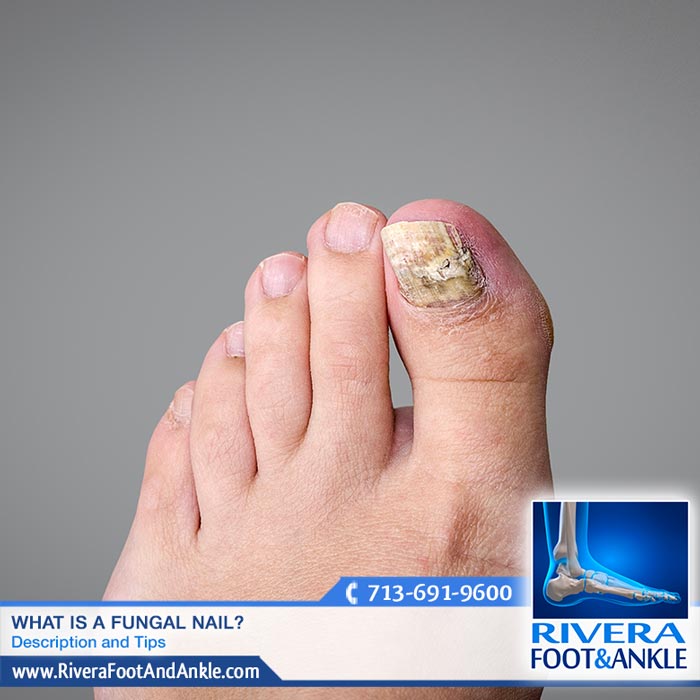
What is a Fungal Nail?
Description and Tips
Onychomycosis is an infection of the bed and plate underlying the surface of the nail, and is caused by various types of fungi, which are commonly found throughout the environment. Fungi are simple parasitic plant organisms, such as molds and mildew, that lack chlorophyll and therefore do not require sunlight for growth. A group of fungi called dermatophytes easily attack the nail, thriving off keratin, the nail's protein substance.
When the tiny organisms take hold, the nail may become thicker, yellowish-brown or darker in color, and foul smelling. Debris may collect beneath the nail plate, white marks frequently appear on the nail plate, and the infection is capable of spreading to other toenails, the skin, or even the fingernails.
Because it is difficult to avoid contact with microscopic organisms like fungi, the toenails are especially vulnerable around damp areas where people are likely to be walking barefoot--swimming pools, locker rooms, and showers, for example. Injury to the nail bed may make it more susceptible to all types of infection, including fungal infection. Those who suffer chronic diseases, such as diabetes, circulatory problems, or immune-deficiency conditions, are especially prone to fungal nails. Other contributory factors may be a history of athlete's foot and excessive perspiration.
Here are some tips:
- Washing your feet regularly with soap and water.
- Remember to dry your feet thoroughly after washing..
- Properly fitted shoes are essential; an astonishing number of people wear shoes that don't fit right, and cause serious foot problems. A shoe with a firm sole and soft upper is best for daily activities.
- Shower shoes should be worn when possible, in public areas.
- Shoes, socks, or hosiery should be changed daily.
- Toenails should be clipped straight across so that the nail does not extend beyond the tip of the toe.
- Use a quality foot powder -- talcum, not cornstarch -- in conjunction with shoes that fit well and are made of materials that breathe.
- Avoid wearing excessively tight hosiery, which promotes moisture.
- Wear socks made of synthetic fiber which tend to "wick" away moisture faster than cotton or wool socks, especially for sports activity.
Source:podiatrists.org
RIVERA FOOT & ANKLE: At Orlando H.Rivera DPM, our priority is to deliver quality care to informed patients in a comfortable and convenient setting. When you have problems with your feet, you need to turn to a podiatrist who listens and responds… an experienced doctor who knows the field and can effectively diagnose and treat your needs… a friendly physician who counsels you on the best ways to maintain and improve your health. Our physician(s) meet all these criteria. Plus, you benefit from a dedicated team of trained professionals who give you the individualized attention you deserve.

Foot Doctor in Houston.
Foot and Ankle, Dr. Orlando Rivera, Foot and Ankle Podiatry, Houston Foot and Ankle Surgical, Treatment of Foot and Ankle, Foot and ankle specialists, Podiatrist in houston, podiatrist in houston, Orlando H.Rivera DPM, Houston Foot Doctor, Foot and Ankle Surgeon Houston, Ankle and Foot Specialist Houston, Podiatrist Houston, Foot Pain Houston, Best Foot and Ankle Podiatry, Advanced Foot and Ankle Specialist in Houston,Foot and Ankle in Houston, Advanced Foot and Ankle Specialist in Houston, Foot and Ankle Podiatry in Houston, Foot and Ankle Surgical in Houston, Treatment of Foot and Ankle in Houston, Foot and ankle specialists in Houston, Podiatrist in Houston, Foot Doctor in Houston, Foot and Ankle Surgeon in Houston, Ankle and Foot Specialist in Houston, Foot Pain in Houston, Foot and Ankle Surgery in Houston, Foot And Ankle Clinics in Hoston.



